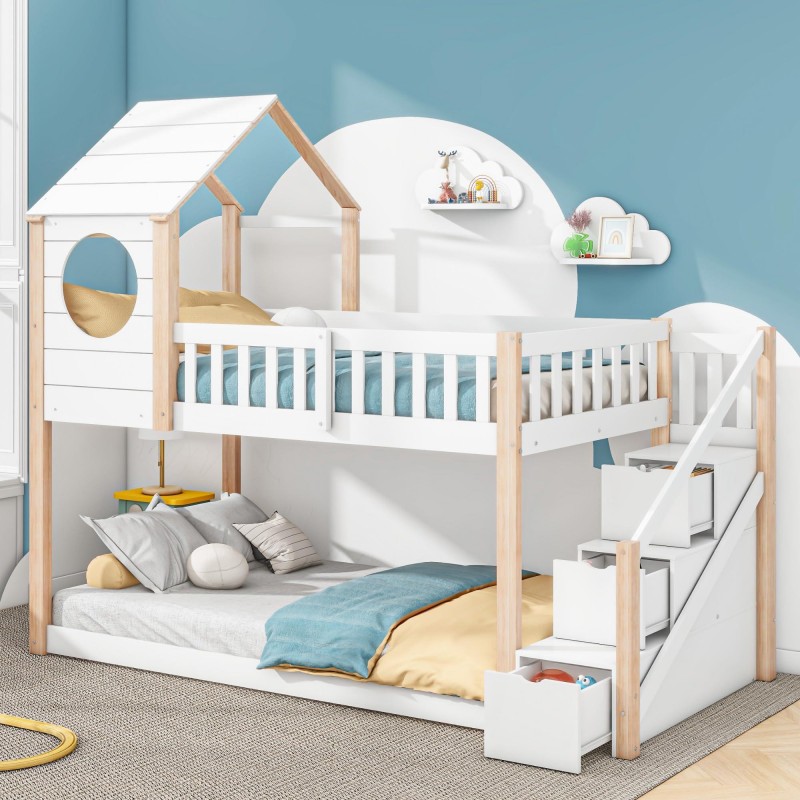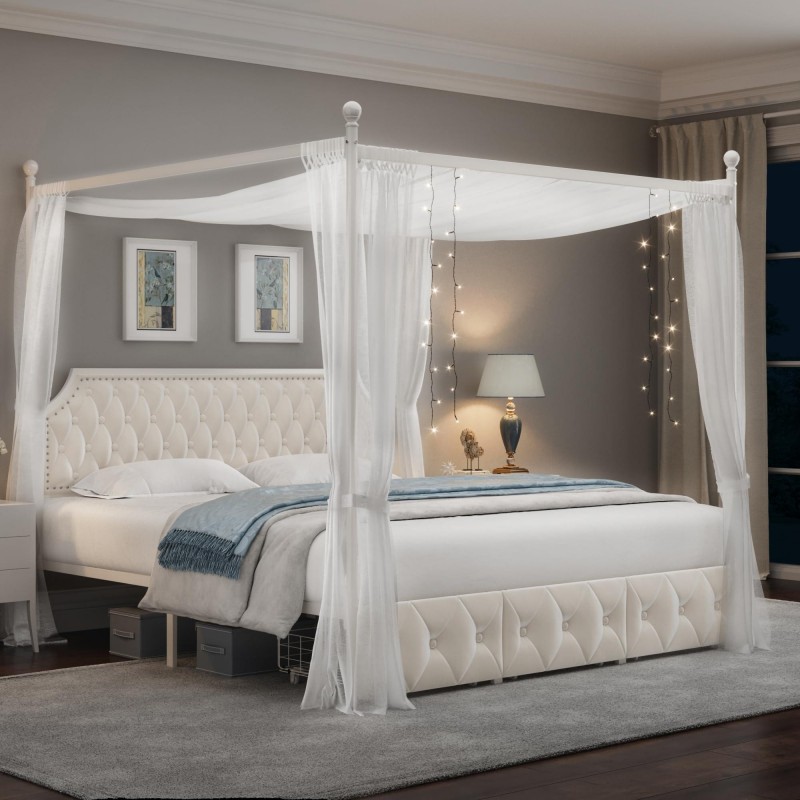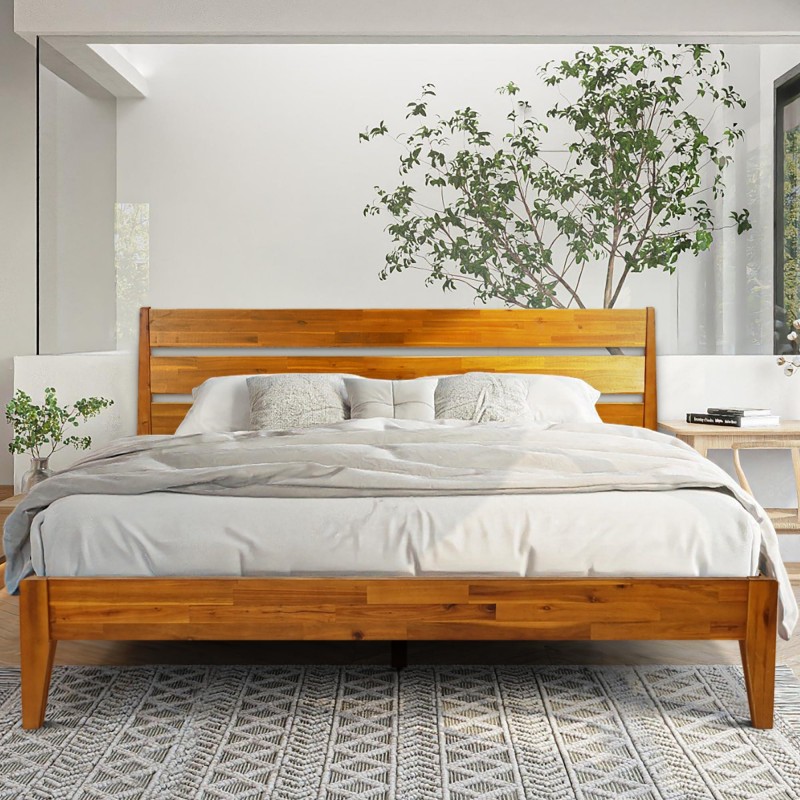Purchasing a new bed is a significant investment that impacts your sleep quality and overall well-being. Given that a good night’s sleep is crucial for physical health and mental clarity, understanding the factors to consider when buying a new bed becomes paramount. Moreover, with countless options available, making an informed choice can often feel overwhelming. Different bed types, sizes, materials, and styles can confuse even the most seasoned shoppers. To ensure satisfaction with your new bed, it is vital to assess your individual needs, preferences, and the specific features that will contribute to a restful sleeping environment. This article will guide you through the essential factors to consider when buying a new bed, including bed types, mattress materials, size options, and more. You will discover how each factor influences not only your comfort but also your overall sleep experience.
Types of Beds: Choosing the Right Bed Frame
When considering what type of bed to purchase, understanding the various bed frame options can significantly affect your choice. Each type has unique features that cater to various preferences and requirements. Here are several popular types of beds to consider:
Traditional Bed Frame
Traditional bed frames typically consist of a headboard, footboard, and side rails. They provide a sturdy structure for holding a mattress and often come in various sizes. These frames usually support platform or box-spring mattresses, appealing to those who enjoy classic aesthetics.
Platform Beds
Platform beds have gained popularity due to their modern and minimalist design. They feature a solid base that supports the mattress without the need for a box spring. This modern approach not only provides support but also often leaves room for creative under-bed storage solutions.
Adjustable Bed Frames
For those who value comfort and personalization, adjustable bed frames offer unique features. These electric frames allow users to adjust the head and foot positions, enhancing comfort while reading or watching television in bed. They are especially beneficial for individuals with specific health issues, such as acid reflux.
Loft and Bunk Beds
If space is a concern, consider loft or bunk beds. These designs maximize vertical space, making them ideal for smaller areas or children’s rooms. Loft beds offer space underneath for a desk or play area, while bunk beds are great for shared bedrooms.
Sleigh Beds
Sleigh beds feature curved or scrolled designs, adding a classic touch to any bedroom. While they are found in both traditional and modern styles, their unique shapes often make them a focal point in the room. Sleigh beds may also include storage options for added functionality.
Mattress Types: Selecting the Best Mattress for Your Needs
Understanding different mattress types is crucial when assessing the factors to consider when buying a new bed. The choice of mattress can significantly impact your comfort and sleep quality. Here are some popular mattress options:
Innerspring Mattresses
Innerspring mattresses have coils that provide support and bounce. They often come in various firmness levels and offer good airflow, making them suitable for those who prefer a cooler sleep experience. However, their longevity may be lower compared to other types.
Memory Foam Mattresses
Memory foam mattresses are famed for their contouring properties. They conform to your body shape and offer excellent support, reducing pressure points. If you or your partner frequently changes positions during the night, memory foam can provide comfort and stability.
Latex Mattresses
Latex mattresses offer resilience, support, and comfort, making them suitable for most sleepers. They are often made from natural materials and provide a bouncy feel. Latex mattresses also regulate temperature, keeping sleepers cool throughout the night.
Hybrid Mattresses
Hybrid mattresses combine the best features of innerspring and foam mattresses. They usually have a base of coils for support, topped with layers of memory foam or latex for comfort. This design caters to various sleeping preferences, making it a popular choice among many.
Air Mattresses
Air mattresses utilize adjustable air chambers to customize firmness. They allow users to control comfort levels, making them excellent for guests or individuals who desire different support preferences. However, their lack of durability limits long-term use.
Determining the Right Bed Size
Selecting the right bed size is vital to ensuring comfort and functionality. Bed size influences not only the visual aesthetics of your room but also the quality of sleep. Here are the common bed sizes to consider:
Twin and Twin XL
Twin beds, often 38 inches wide by 75 inches long, are ideal for children or compact spaces. If you need extra length, consider the Twin XL option, which adds 5 extra inches, making this size suitable for taller individuals.
Queen
Queen-size beds, at 60 inches wide and 80 inches long, strike a balance between comfort and space. They suit couples and individuals alike, offering ample sleeping space without overwhelming smaller rooms.
King and California King
For those seeking maximum sleeping space, King-size (76 inches wide by 80 inches long) or California King (72 inches wide by 84 inches long) beds deliver. King beds are ideal for couples needing extra room, while California Kings cater to taller individuals with unique dimensions.
Room Size Considerations
Additionally, evaluate the size of your room before deciding on a bed size. Make sure to leave adequate space for bedside tables, walking paths, and other furniture. This consideration will ensure your bedroom remains functional and aesthetically pleasing.
Evaluating Your Lifestyle and Sleep Preferences
Your lifestyle and personal sleep preferences significantly influence the decision-making process when identifying the factors to consider when buying a new bed. Reflecting on how you sleep, your routines, and any health concerns can lead you to the best choice.
Sleep Position
Understanding your typical sleeping position—whether you are a back, side, or stomach sleeper—determines the mattress firmness and support you need. For example:
- Back sleepers often require moderate support to keep the spine aligned.
- Side sleepers typically benefit from softer mattresses that cushion the shoulders and hips.
- Stomach sleepers may prefer firmer options to avoid sinking and support the lower back.
Activity Level
If you lead an active lifestyle or engage in sports, supporting recovery becomes essential. A mattress that offers optimal pressure relief, such as a memory foam model, can help prevent soreness and ensure restorative sleep.
Health Concerns
If you experience specific health issues, like back pain or allergies, incorporating these factors into your buying decision is crucial. Look for mattresses designed for orthopedic support or hypoallergenic materials that reduce allergens and improve sleep quality.
Roommate Considerations
For those sharing their bed, consider the preferences of your partner as well. Discuss your needs together and choose a mattress that accommodates both partners’ preferences for comfort.
Budgeting for Your New Bed
While investing in a new bed is essential, it’s crucial to set a reasonable budget to guide your choices. Here are some tips for budgeting effectively:
Determine a Budget Range
Assess your finances to establish a budget range that aligns with your priorities. Consider how much you are willing to spend and evaluate areas where you can save or allocate more resources.
Evaluate Cost vs. Quality
Balance cost against quality. While you might find cheaper options, prioritize mattresses and beds that offer durability and satisfaction over time. Investing in a higher-quality product can lead to long-term savings.
Don’t Overlook Sales and Discounts
Retailers frequently offer sales events and discounts where you can find great deals on mattresses. Take advantage of holiday sales or promotional events to find the best options at lower prices.
Consider Added Costs
Remember to factor in additional costs that may arise, such as delivery fees, mattress protectors, and bedding essentials. Leaving room in your budget for these items ensures you don’t encounter surprises later.
Trying Before You Buy: The Importance of Testing
Before making your final decision, it’s wise to test the bed and mattress in person. This step allows you to assess comfort levels and suitability:
Visit Showrooms
Take the opportunity to visit brick-and-mortar showrooms. Laying on different mattresses in stores provides an immediate sense of comfort. Make sure to try various styles and stiffness levels to identify which suits you best.
Seek a Comfort Trial
Many retailers offer comfort trials for mattresses. Utilize these trials to test the mattress at home for a specific period. Use this opportunity to gauge long-term comfort levels before committing to your purchase.
Ask Questions
Engage with sales staff and ask questions regarding warranties, materials, and return policies. Gaining insight into the product will aid in making the best choice for your needs.
Bring a Partner
If you share a bed, consider attending mattress testing with your partner. Being able to try options together can help resolve individual preferences and foster healthier sleep interactions.
Getting the Most Out of Your New Bed
Finally, once you select and purchase your new bed, there are steps you can take to ensure longevity and ultimate comfort.
Setup and Assembly
Properly set up your new bed and mattress according to the manufacturer’s instructions. Ensure everything is secure and stable to avoid any inconveniences later on.
Invest in Quality Bedding
Bedding, including sheets, duvets, and mattress protectors, impacts comfort and quality of sleep. Selecting high-quality materials will enhance the overall experience of your new bed.
Regular Maintenance
Maintain your mattress by rotating it every few months to avoid uneven wear. Clean the bedding and mattress regularly following the manufacturer’s recommendations to ensure durability and hygiene.
Monitor Your Sleep Quality
Take note of your sleep quality and make adjustments as needed. If you find discomfort or unrest, consider factors such as positioning, bedding quality, and room conditions and modify as necessary.
Conclusion
Choosing the right bed involves exploring various factors to consider when buying a new bed. From understanding bed types and selecting appropriate mattress materials to evaluating space and lifestyle needs, each decision contributes significantly to your overall sleep experience. As a vital part of daily life, investing time and resources into selecting the perfect bed enhances the quality of sleep, provides comfort, and improves overall well-being. By reflecting on your personal needs, testing products, and understanding the unique features and specifications available, you can make an informed decision that ultimately leads to more restful nights. When you invest in a new bed, you’re not just purchasing a piece of furniture; you’re investing in your health, comfort, and happiness.